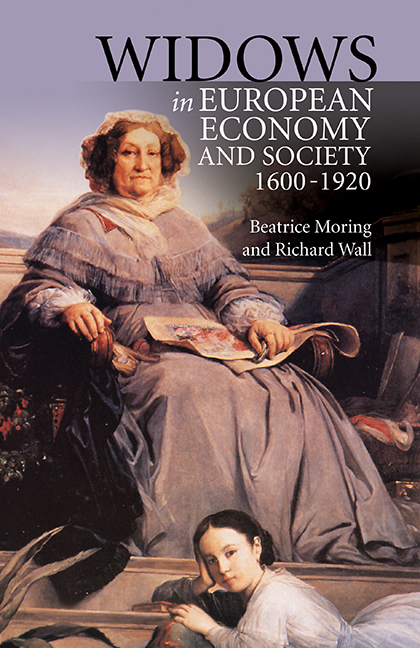Book contents
- Frontmatter
- Contents
- List of Plates
- List of Tables
- Acknowledgements
- Introduction
- 1 Widows and Poverty
- 2 Widows, Legislation and Property
- 3 Assessing the Assets of the Widow
- 4 Life Interest, Usufruct or Pension, The Mainstay of the Widow?
- 5 Urban Widows, Economy and Family
- 6 The Demography of Widowhood
- 7 Household Structure, Age, Social Status and Geography
- Conclusion
- Appendices
7 - Household Structure, Age, Social Status and Geography
Published online by Cambridge University Press: 30 August 2017
- Frontmatter
- Contents
- List of Plates
- List of Tables
- Acknowledgements
- Introduction
- 1 Widows and Poverty
- 2 Widows, Legislation and Property
- 3 Assessing the Assets of the Widow
- 4 Life Interest, Usufruct or Pension, The Mainstay of the Widow?
- 5 Urban Widows, Economy and Family
- 6 The Demography of Widowhood
- 7 Household Structure, Age, Social Status and Geography
- Conclusion
- Appendices
Summary
IN the preceeding chapters we have illuminated the fact that economic collaboration and cohabitation between widows and their children were present in the most diverse social groups. However, we have also found indications that institutional constraints were sometimes present, as in the case where the poor relief, particularly in an institution, was conditional on any teenage or adult children leaving their mother, or young children being sent to ‘suitable foster families’ or apprenticed. Where the family lacked resources, taking up posts as servants might be the only option for the children of a widow. In addition, the question of legal domicile could force widows to stay in parishes where no kin of their own was present. Despite such obstacles, working young, or teenage, children are often found in the households of widows, particularly in urban areas with job opportunities. We have also seen that where the family held property or a business, including being engaged in farming on freehold land or land held on contracts spanning generations, the likelihood of shared economy and residence was quite high.
The previous chapter demonstrated that, despite infant mortality in past time, most widows had at least one child, and some more than one, at the time they were widowed. This chapter will be devoted to an analysis of household data to unravel the effects of demography, economy and social stratification on the prevalence and ability of widows and children of different ages and gender to form units of cohabitation and collaboration.
Discussion of Household Structures and Cohabitation in the Past
In his studies of the family in nineteenth-century Europe, Frederic Le Play put forward the hypothesis that the industrialisation and urbanisation of society endangered the stability of the family. Le Play understood the family as being much more than a unit of procreation. To him, the function of the family was to provide security for several generations and promote co-operative strategies between family members.
- Type
- Chapter
- Information
- Widows in European Economy and Society, 1600-1920 , pp. 211 - 248Publisher: Boydell & BrewerPrint publication year: 2017

